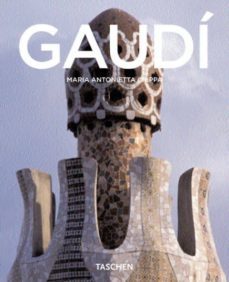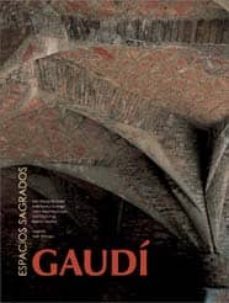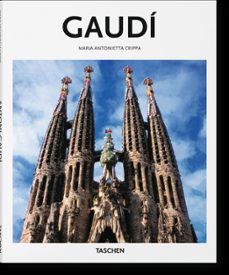Imprescindibles
Ficción
No Ficción
Ciencias y tecnología Biología Ciencias Ciencias naturales Divulgación científica Informática Ingeniería Matemáticas Medicina Salud y dietas Filología Biblioteconomía Estudios filológicos Estudios lingüísticos Estudios literarios Historia y crítica de la Literatura
Humanidades Autoayuda y espiritualidad Ciencias humanas Derecho Economía y Empresa Psicología y Pedagogía Filosofía Sociología Historia Arqueología Biografías Historia de España Historia Universal Historia por países
Infantil
Juvenil
#Jóvenes lectores Narrativa juvenil Clásicos adaptados Libros Wattpad Libros Booktok Libros de influencers Libros de Youtubers Libros Spicy Juveniles Libros LGTBIQ+ Temas sociales Libros ciencia ficción Libros de acción y aventura Cómic y manga juvenil Cómic juvenil Manga Shonen Manga Shojo Autores destacados Jennifer L. Armentrout Eloy Moreno Nerea Llanes Hannah Nicole Maehrer
Libros de fantasía Cozy Fantasy Dark academia Hadas y Fae Romantasy Royal Fantasy Urban Fantasy Vampiros y hombres lobo Otros Misterio y terror Cozy mistery Policiaca Spooky Terror Thriller y suspense Otros
Libros románticos y de amor Dark Romance Clean Romance Cowboy Romance Mafia y amor Romance dramatico Romcom libros Sport Romance Otros Clichés Enemies to Lovers Friends to Lovers Hermanastros Slow Burn Fake Dating Triángulo amoroso
Cómic y manga
Novela gráfica Novela gráfica americana Novela gráfica europea Novela gráfica de otros países Personajes, series y sagas Series y sagas Star Wars Superhéroes Cómics DC Cómics Marvel Cómics otros superhéroes Cómics Valiant
eBooks
Literatura Contemporánea Narrativa fantástica Novela de ciencia ficción Novela de terror Novela histórica Novela negra Novela romántica y erótica Juvenil Más de 13 años Más de 15 años Infantil eBooks infantiles
Humanidades Autoayuda y espiritualidad Ciencias humanas Economía y Empresa Psicología y Pedagogía Filosofía Historia Historia de España Historia Universal Arte Cine Música Historia del arte
Ciencia y tecnología Ciencias naturales Divulgación científica Medicina Salud y dietas Filología Estudios lingüísticos Estudios literarios Historia y crítica de la Literatura Estilo de vida Cocina Guías de viaje Ocio y deportes
Maria Antonietta Crippa
Maria Antonietta Crippa es actualmente profesora“extraordinaria”de historia de la arquitectura en la Universidad Politécnica de Milán, en el DiAP (Departamento de Arquitectura y Planificación de la Escuela de Arquitectura). Desde principios de los años 1980 ha publicado ampliamente sobre arquitectura y urbanismo.
Recibe novedades de MARIA ANTONIETTA CRIPPA directamente en tu email
Filtros
Del 1 al 5 de 5
TASCHEN BENEDIKT 9783822824429
Gaudi's bizarre and romantic buildings, interiors and exteriors, mosiacs and public spaces, have imbued Barcelona with unique character and ensured his place in the pantheon of great architects.
Ver más
Tapa blanda
TASCHEN BENEDIKT 9783822825198
"Do you want to know where I found my model? An upright tree; it bears its branches and these, in turn, their twigs, and these, in turn, the leaves. And every individual part has been growing harmoniously, magnificently, ever since God the artist created it." - Antoni Gaudí. Raised during the Industrial Revolution, Spanish architect Antoni Gaudí (1852-1926) strove to distinguish and reaffirm the identity of his native Catalonia as Spain and the rest of Europe modernized. Early neo-Gothic designs were the stepping-stone to the mature, original style that came to be synonymous with his name. Incorporating bold colors and odd bits of material into his designs, Gaudí created inspiring, visionary buildings and helped establish Barcelona (most notably with the still-unfinished Sagrada Família cathedral) as a city of the world.
Ver más
Tapa blanda
TASCHEN BENEDIKT 9783822825181
Raised during the Industrial Revolution, Spanish architect Antoni Gaudí (1852-1926) strove to distinguish and reaffirm the identity of his native Catalonia as Spain and the rest of Europe modernized. Early neo-Gothic designs were the stepping-stone to the mature, original style that came to be synonymous with his name. Incorporating bold colors and odd bits of material into his designs, Gaudí created inspiring, visionary buildings and helped establish Barcelona (most notably with the still-unfinished Sagrada Família cathedral) as a city of the world.
Ver más
Tapa blanda
LUNWERG 9788477828716
En el año 2002 se conmemoraron los ciento cincuenta años del nacimiento de Antoni Gaudí. Por este motivo, la editorial Lunwerg publica una trilogía sobre la obra y el pensamiento de este arquitecto universal. El tercer volumen, Gaudí. Espais sagrats, pretende introducirnos en el aspecto sagrado de la vida que reflejan las obras de Gaudí, a partir de su conciencia religiosa y de la de los personajes que se las encargaban. La fotografía de Marc Llimargas permite una visión exquisita de esta vertiente trascendente en el mundo visual y estético de la obra de Gaudí
Ver más
Tapa dura
TASCHEN 9783836560269
Desde la imponente Sagrada Família hasta la brillante fachada rica en texturas de la Casa Batlló, pasando por el maravilloso paisaje del Park Güell, es fácil entender por que Antoni Gaudí (1852-1926)
Ver más
Tapa dura
Del 1 al 5 de 5



























